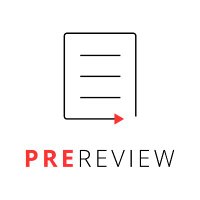A Quantitative Study of Inappropriate Image Duplication in the Journal Toxicology Reports
This article has been Reviewed by the following groups
Discuss this preprint
Start a discussion What are Sciety discussions?Listed in
- Evaluated articles (PREreview)
- ASAPbio Meta-Research Crowd PREreviews (prereview)
Abstract
Inappropriate image duplication is a type of scientific error that can be detected by examining published literature. Few estimates of the frequency of this problem have been published. This study aimed to quantify the rate of image duplication in the journal Toxicology Reports . In total 1540 unique articles (identified by DOI) were checked for the presence of research related images (microscopy, photography, western blot scans, etc). Each research paper containing at least one such image was scrutinized for the presence of inappropriate duplications, first by manual review only, and subsequently with the assistance of an AI tool (ImageTwin.ai). Overall, Toxicology Reports published 715 papers containing relevant images, and 115 of these papers contained inappropriate duplications (16%). Screening papers with the use of ImageTwin.ai increased the number of inappropriate duplications detected, with 41 of the 115 being missed during the manual screen and subsequently detected with the aid of the software. In summary, the rate of inappropriate image duplication in this journal has been quantified at 16%, most of these errors could have been detected at peer review by careful reading of the paper and related literature. The use of ImageTwin.ai was able to increase the number of detected problematic duplications.
Article activity feed
-

This Zenodo record is a permanently preserved version of a PREreview. You can view the complete PREreview at https://prereview.org/reviews/8402209.
This review reflects comments and contributions from Martyn Rittman and Allie Tatarian. Review synthesized by Stephen Gabrielson.
In this study, both a human reviewer and an AI tool screened papers from the journal Toxicology Reports for inappropriate image duplication.
Major comments:
-
Having a single human reviewer at both steps (the initial review for duplicated images, and the review of AI-flagged duplications) is a potential source of bias. The safest thing to do is to have three image reviewers - two that conduct an initial review and review the AI-flagged hits, plus a third on hand to act as a tiebreaker in case the two reviewers disagree. Or since this could be a substantial …
This Zenodo record is a permanently preserved version of a PREreview. You can view the complete PREreview at https://prereview.org/reviews/8402209.
This review reflects comments and contributions from Martyn Rittman and Allie Tatarian. Review synthesized by Stephen Gabrielson.
In this study, both a human reviewer and an AI tool screened papers from the journal Toxicology Reports for inappropriate image duplication.
Major comments:
-
Having a single human reviewer at both steps (the initial review for duplicated images, and the review of AI-flagged duplications) is a potential source of bias. The safest thing to do is to have three image reviewers - two that conduct an initial review and review the AI-flagged hits, plus a third on hand to act as a tiebreaker in case the two reviewers disagree. Or since this could be a substantial amount of work, having at least an extra reviewer to check the positive hits would be advisable.
Minor comments:
-
Would like to see more discussion of potential false positives, and what "appropriate" image duplication might look like (especially since the term "inappropriate image duplication" is used throughout).
-
I would like to know why all papers are taken from a single journal rather than, say, a spread of journals on a similar topic. It leaves the author open to accusations of prejudice against the journal and its editors. A conflict-of-interest statement on whether the author has had previous interactions with the journal would be a useful clarification.
-
It would be great if the author shares the example of false positive (where the images are mistakenly identified as duplicates). This would give a holistic overview of how good the manual screening was in identifying the duplicate images.
-
On line 41: "Data duplication between papers, including charts as well as images, has been quantified as high as ~25%" -- is this equivalent to republication without appropriate citation?
-
On line 66, the author describes that there were cases when images were also compared between other papers by the same research group or author. What prompted this more detailed investigation and why/how were some papers given more scrutiny?
Comments on reporting:
-
The venn diagram showing how the images were detected is a great idea. Adding the total numbers of papers selected to the study in the venn diagram would be nice, too.
Competing interests
The author declares that they have no competing interests.
-
-
